Testing of LSE reference spheres regarding their usability with the Leica RTC360
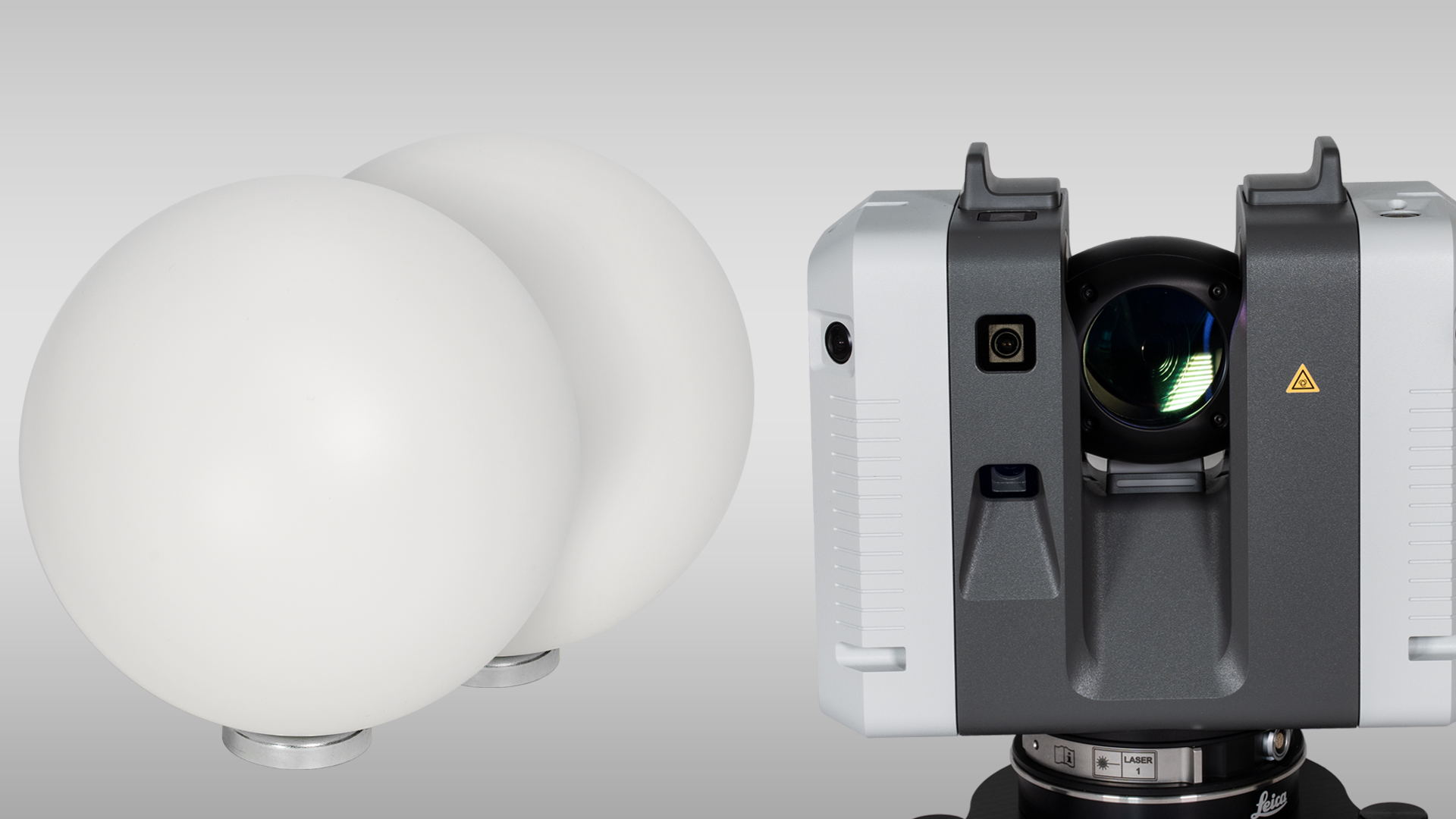
Im Rahmen einer Untersuchung haben wir verschiedene Referenzkugeln auf das Verhalten mit dem Leica RTC360 Laserscanner getestet. Essenzielle Frage war dabei, ob Besitzer des RTC360 mit ihrer Hard- und Software die Referenzmarken benutzen können. Um eine Bewertung möglich zu machen, wurden verschiedene Kriterien aufgestellt.
Zur Qualität der Einpassung der Kugel wurden Standardabweichungswerte verglichen. Von Interesse war dabei auch die Untersuchung, wie viele Punkte in welcher Entfernung noch zur Berechnung genutzt werden können. Ob die Einpassung der Kugeln automatisch übernommen wird oder überhaupt möglich ist, wurde ebenfalls in verschiedenen Software-Lösungen getestet.
As part of an investigation, we tested various reference spheres for their behavior with the Leica RTC360 laser scanner. The key question was whether owners of the RTC360 can use the reference spheres with their hardware and software. To allow an evaluation, different criteria were set up.
Standard deviation values were compared with regard to the quality of the sphere's fitting. Another interesting aspect was the investigation of how many points at what distance can still be used for calculation. Whether the fitting of the spheres is carried out automatically or is possible at all was also tested in various software solutions.
Test arrangement
The following reference spheres were inspected in the test:
- Laser scanner prism reference sphere (Ø 145mm)
- Laser scanner reference sphere (Traveler) (Ø 145mm)
- Laser scanner reference sphere (Basic) (Ø 145mm)
- Laser scanner reference sphere (Flexi) (Ø 145mm)
- Laser scanner reference sphere XXL (Ø 200mm)
- Laser scanner reference sphere FLEXI XXL (Ø 200mm)

The spheres were scanned at four different distances (10m, 15m, 20m, 25m) in order to investigate their behaviour at increasing distance. The Leica RTC360 was used to measure at the highest possible resolution of 3mm/10m. The measurement was performed six times at each distance - but not one after the other (!!!) - to ensure the reliability of the test. During the measurements, the reference spheres were positioned at the height of the horizontal axis of the scanner.
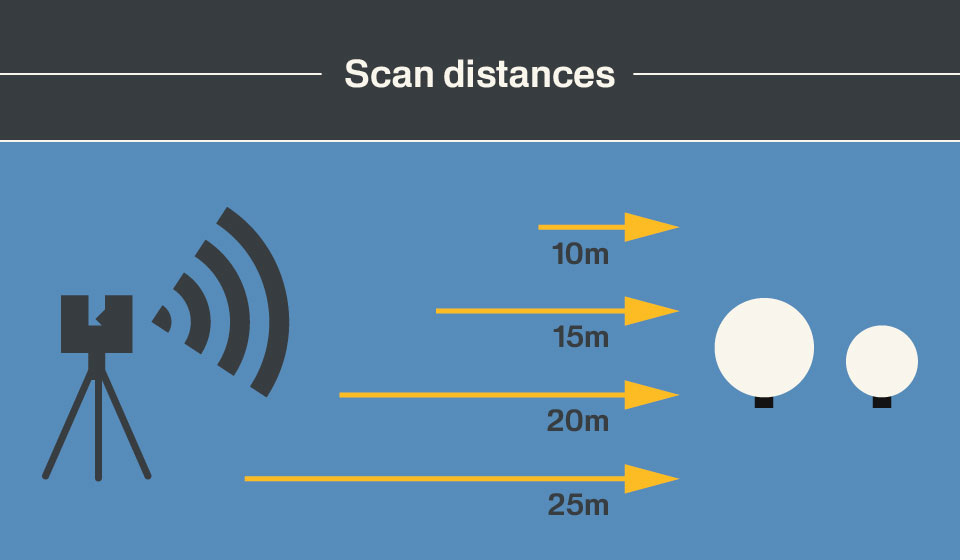
The measurements were taken indoors in daylight on a slightly cloudy day. No external light source was used. The temperature in the measurement area was about 22°C.
The evaluation of the measurements was done afterwards in Leica Cyclone, Register360 and PointCab.
Analysis
First, the detection of the reference spheres was investigated in various software solutions. The purpose was to check whether the reference spheres are recognized automatically, semi-automatically or not at all. In the following charts, the results are shown by means of colors.
White = automatic detection
Yellow = semi-automatic detection
Red = no detection
The standard deviation of the sphere fitting is also of interest in order to evaluate the point noise on the surface of the reference spheres. The number of points on the sphere surface is also important for assessing the reliability of the detection.
Processing software Cyclone
Leica Cyclone allows you to import a wide variety of scan data into a project as well as register and edit the data. The scans from the Leica RTC360 were imported and an automatic target detection was performed. Previously, the sphere radius was defined as 145mm in the settings. For the XXL spheres, a sphere radius of 200mm was preset in a second processing.
The following figure shows the detection of the reference spheres at different distances.
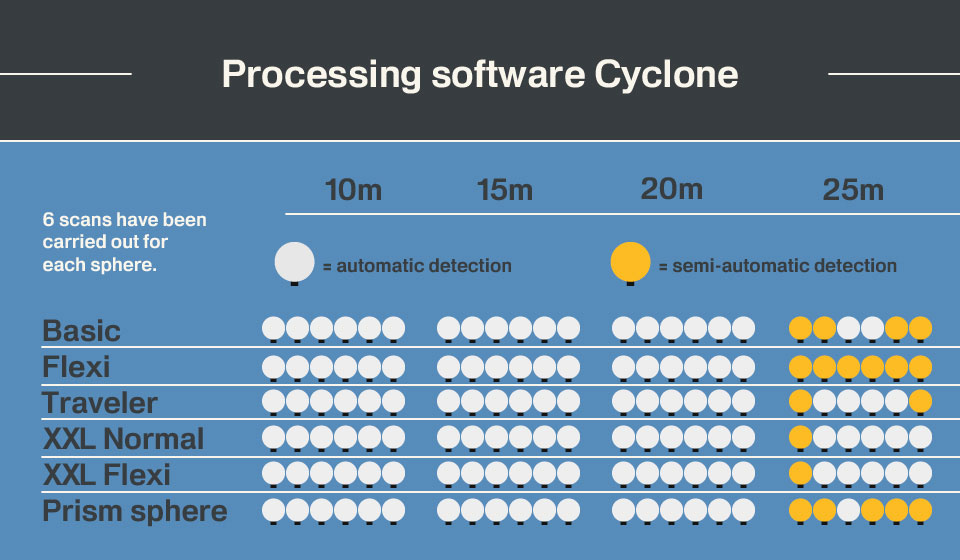
Processing software Register360
In Register360, also a Leica software for processing scan data, processing with automatic reference object search was carried out after importing the scan data. We got the following results:
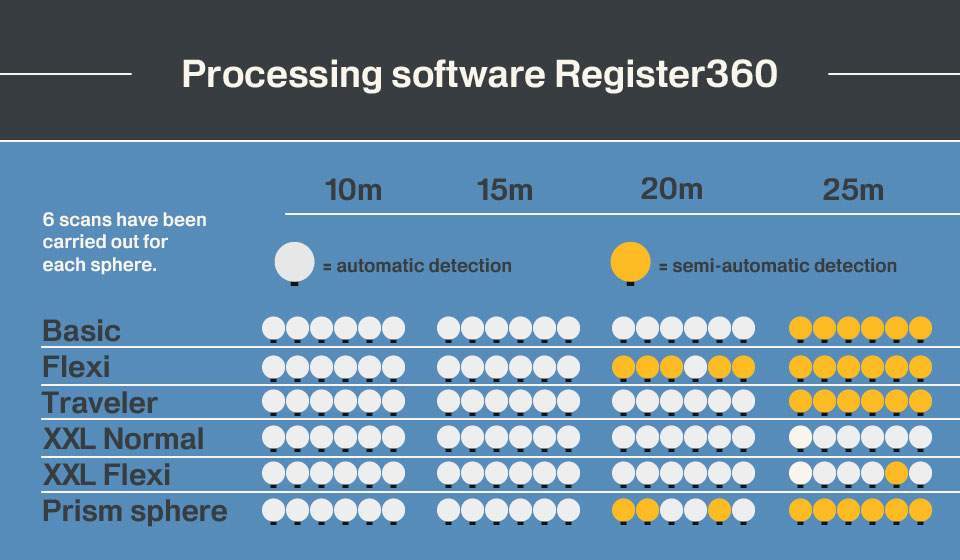
Processing software PointCab
The detection of the reference spheres was also performed in the stand-alone software PointCab. The Leica raw data could not be imported directly into PointCab. To be able to import the data into PointCab, the scan data was first imported into Register360 and then exported directly as ".e57" files.
In PointCab, an automatic feature detection was carried out as well. The results are shown in the following figure.
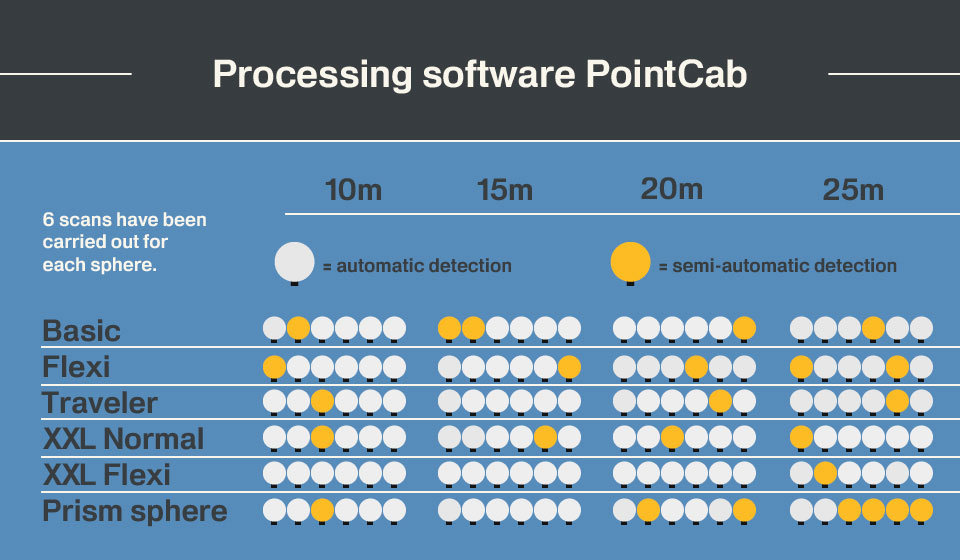
In greater distances of the reference spheres, PointCab shows a better detection behavior than Cyclone and Register. However, it may happen that the automatic detection does not work in some cases at shorter distances.
Analysis in the software solutions
It is obvious that any software is able to detect the reference spheres. In most cases, the objects can be identified automatically at a distance of up to 20m. At greater distances, the number of points on the sphere surface often becomes too small for automatic detection, making manual reworking necessary. With XXL spheres, the surface is larger so that automatic detection still works.
The following figure shows how many scan points are available for using the fitting of the spherical objects. This also makes it possible to estimate how large the threshold values between automatic detection and manual rework are.
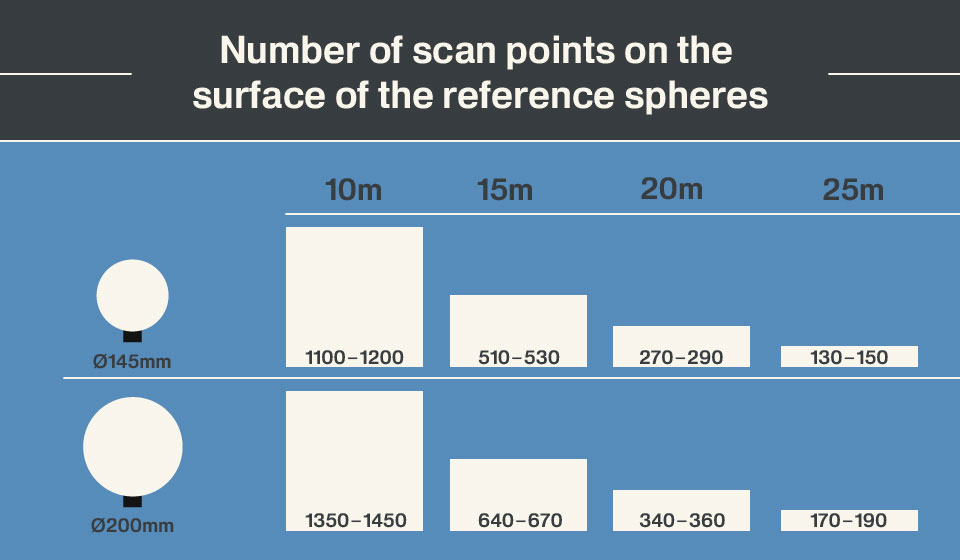
The standard deviation for the fitting of the reference spheres was checked in Leica Cyclone. This always resulted in a value below 1mm. This standard deviation indicates that the material of the reference spheres works well when used with the Leica RTC360. No remarkable point noise was detected on the surface of the reference spheres.
Conclusion – Sphere detection with Leica RTC360
The scanning accessories from Laserscanning Europe in the form of reference spheres are suitable for use with the Leica RTC360. No reduction in quality due to loss of accuracy was noted. The corresponding Leica software, as well as PointCab, is able to execute an automatic feature detection.
Are you looking for laser scanning accessories? – Visit our online shop!
All accessories mentioned in this case study can be easily purchased in our well-assorted online shop.